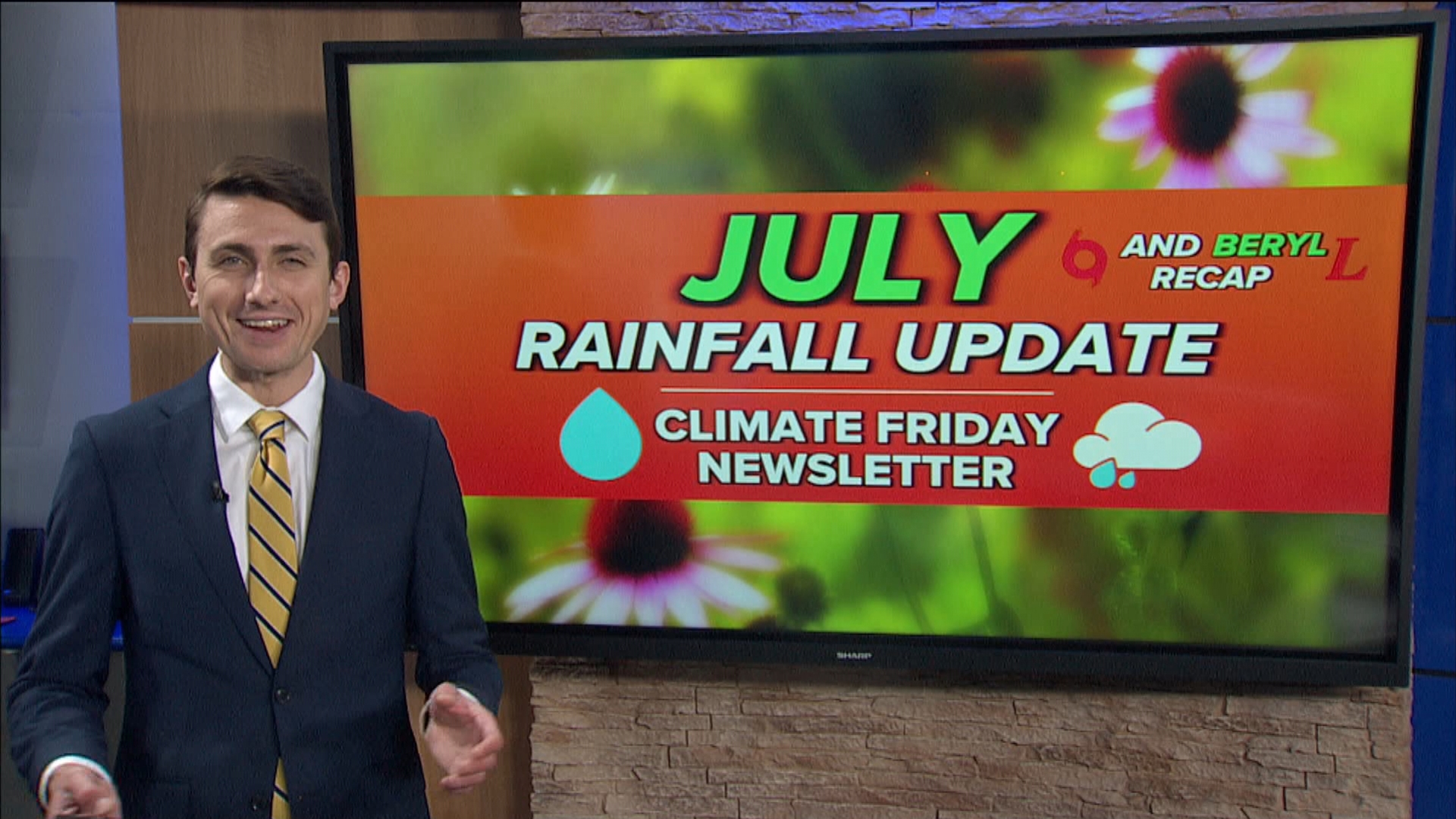TOLEDO, Ohio — After a historically wet June, the month of July started off with hardly a drop of rain for its first week.
On Tuesday and Wednesday, the remnants of Hurricane Beryl delivered tropical moisture and soaking rainfall to the region, not only making up the monthly rainfall deficit, but adding to the summertime precipitation surplus.
In this week's edition of Climate Friday, Meteorologist John Burchfield breaks down the numbers behind this week's rainfall and the potential impacts to the summer harmful algal bloom.

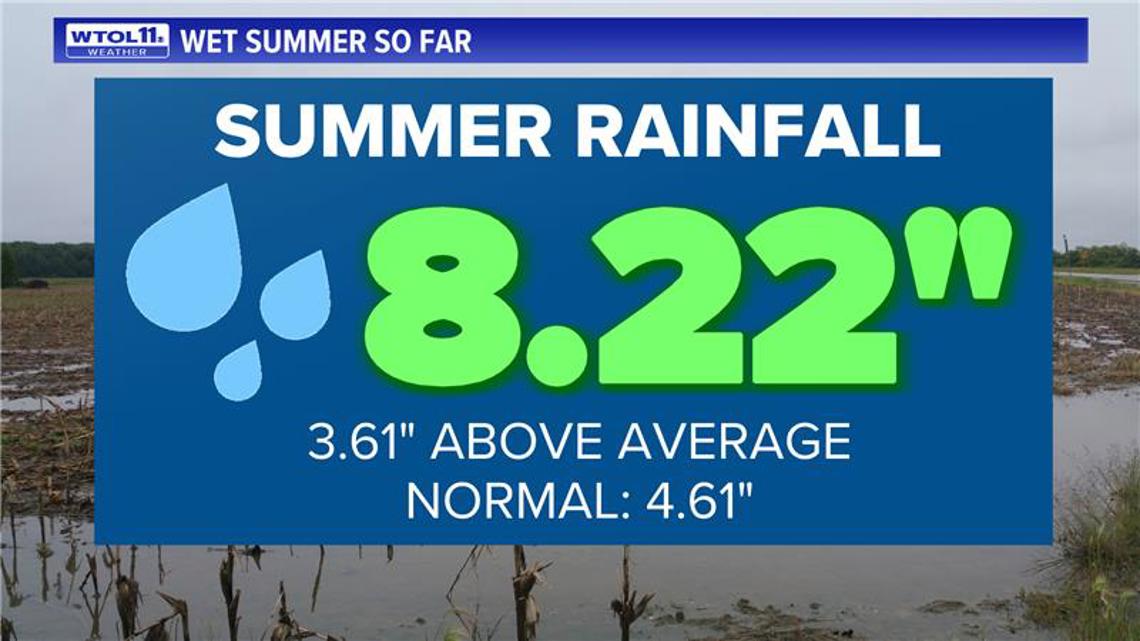
The month of June dosed out almost half a foot of rain, 2.5" above-average. Frequent heavy rainfall delayed the spring planting season for many local farmers. Following this historically wet June, July started off bone dry for the first week.
The first eight days of July brought just two hundredths of an inch of rainfall, featuring cooler and drier conditions. Then came Beryl, a rapidly intensifying tropical storm that developed on June 28 and impacted Toledo on July 9.

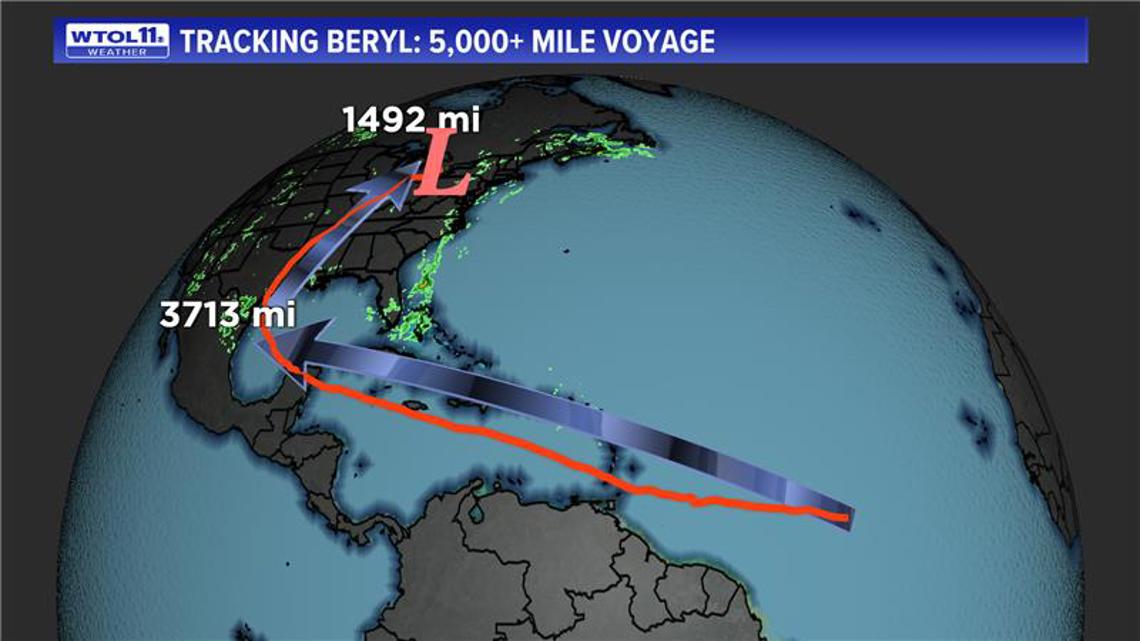
In just 48 hours, Beryl intensified from a tropical depression to a major Category 4 hurricane, becoming the first June Category 4 ever recorded in the Atlantic basin.
After sweeping through the Caribbean, impacting Jamaica and the Cayman Islands, Beryl slammed into the Yucatan Peninsula of Mexico. Following a brief weakening phase, Beryl regained strength over the unseasonably warm waters of the Gulf of Mexico, making landfall in Texas early Monday morning around 4 a.m. as a Category 1 hurricane.
In addition to delivering hurricane-force winds and strong storm surges, Beryl brought widespread severe weather in several rounds to much of the United States, spawning over 200 Tornado Warnings this week. Though Toledo and northwest Ohio did not see any severe weather, heavy rainfall inundated much of the region.

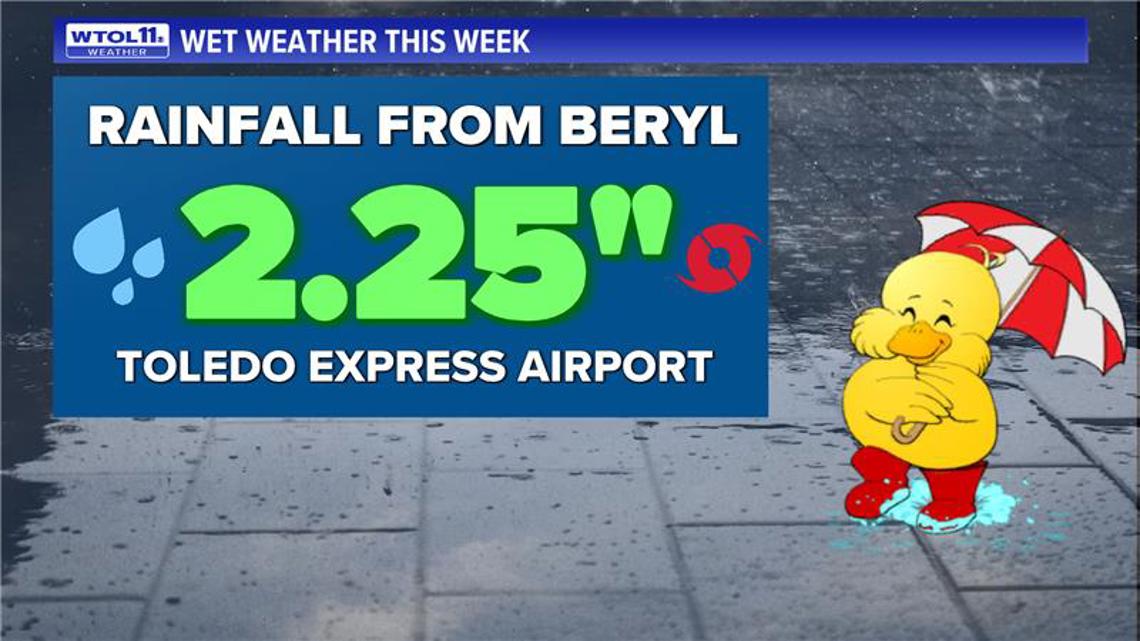
A swatch of 3-6" of rain impacted northwest Indiana and western Michigan, just barely missing the WTOL 11 viewing area. Heavy rain left behind widespread 2-3" totals in the Maumee River Basin, including isolated 4" reports.
Heavy rainfall is known to exacerbate algal blooms by increasing nutrient loading into bodies of water. Phosphorus and nitrogen from area farm fields flood into rivers and streams after a heavy rain event, eventually flowing into the western basin of Lake Erie.
Nutrient runoff into the Maumee River is strongly correlated with the severity of an algal bloom. Though the summer harmful algal bloom is still over a month away from its peak, the combination of heavy rainfall and warm waters could ramp up the proliferation of cyanobacteria.
With Lake Erie water temperatures close to 80 degrees, the warm and nutrient-rich waters will provide an ideal environment for algae to flourish. Despite the recent rainfall, the latest projections from NOAA retain a forecast of a moderate to slightly larger-than-moderate algal bloom, represented numerically by a severity index range of 4.5-6 out of 10.

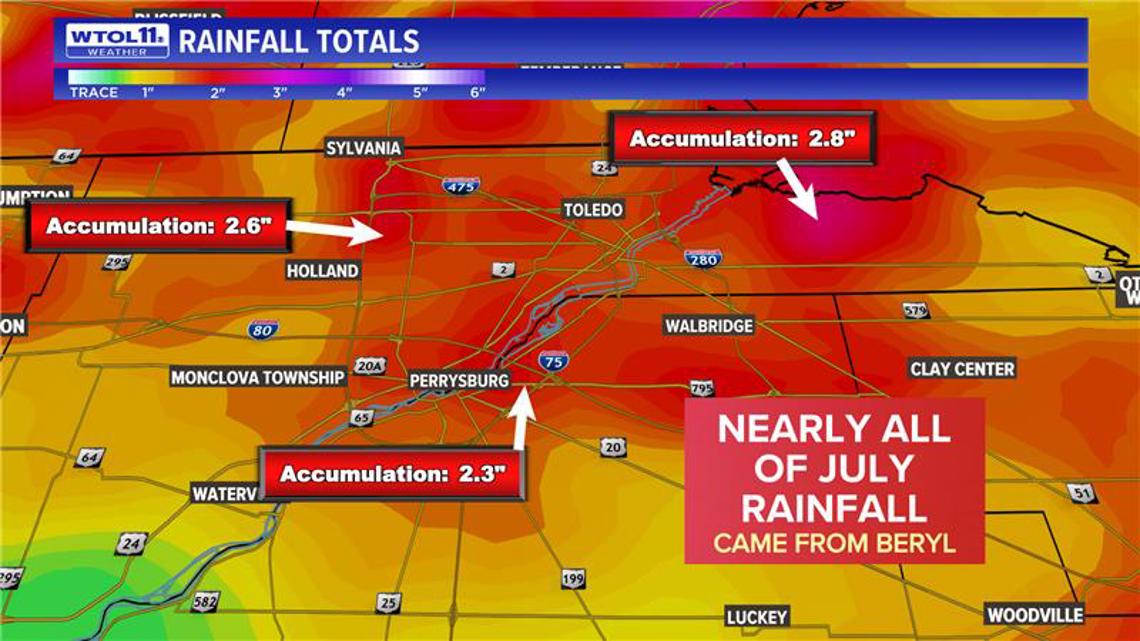
Despite recent heavy rainfall, July has started off far cooler-than-average. As of Thursday evening, July temperatures were 3.6 degrees below-average with an mean high of 81.6. Algae thrive in hotter conditions, so the lack of summertime heat could possibly hamper growth.
At this point in the summer, algal bloom expansion is inevitable in the shallow, warm waters of the western basin of Lake Erie. Weather conditions play a more minor role in the seasonal algal bloom that has become an annual occurrence in northwest Ohio.
After a relatively cool start to July, the WTOL 11 Weather Team expects a brief warmup followed a significant drop in temperatures and humidity mid-month. This could potentially have a counterbalancing effect on the algal bloom.

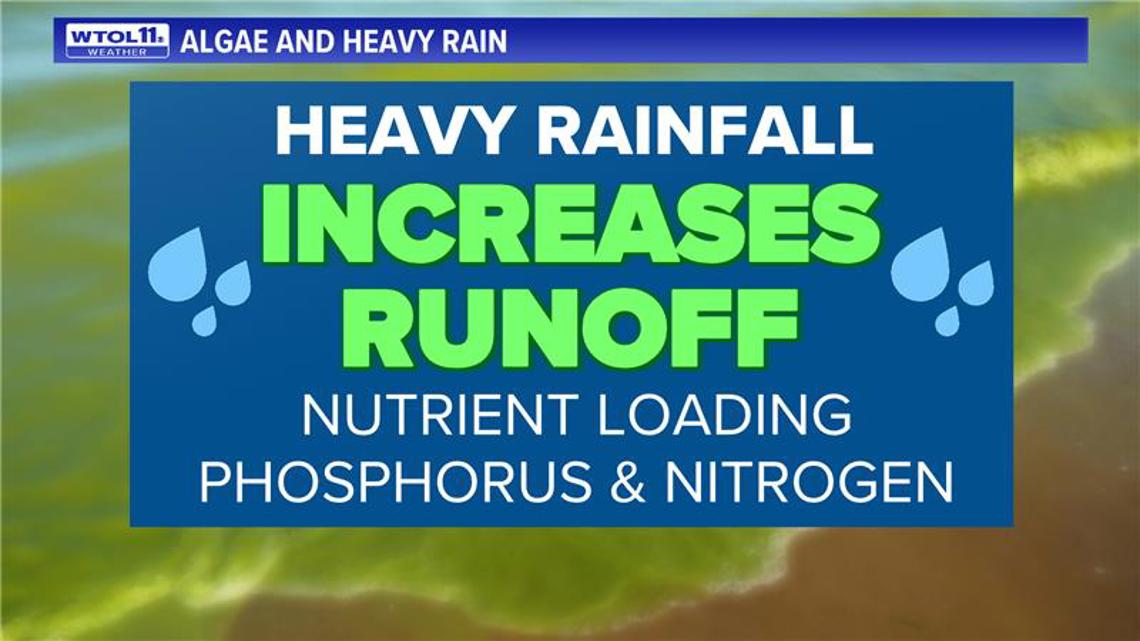
Precipitation and temperatures both play a role in the health of our water during the summer, and number of variables will impact the algal bloom this summer. After a wet week of weather, hotter and drier conditions will return for the weekend before a substantial cooldown arrives late in the week.
Stay tuned to the WTOL 11 weather team for the latest 10-day forecast and subscribe to the Climate Friday Newsletter for more content every week.
WATCH more weather content on WTOL:

